- News
- Reviews
- Bikes
- Components
- Bar tape & grips
- Bottom brackets
- Brake & gear cables
- Brake & STI levers
- Brake pads & spares
- Brakes
- Cassettes & freewheels
- Chains
- Chainsets & chainrings
- Derailleurs - front
- Derailleurs - rear
- Forks
- Gear levers & shifters
- Groupsets
- Handlebars & extensions
- Headsets
- Hubs
- Inner tubes
- Pedals
- Quick releases & skewers
- Saddles
- Seatposts
- Stems
- Wheels
- Tyres
- Tubeless valves
- Accessories
- Accessories - misc
- Computer mounts
- Bags
- Bar ends
- Bike bags & cases
- Bottle cages
- Bottles
- Cameras
- Car racks
- Child seats
- Computers
- Glasses
- GPS units
- Helmets
- Lights - front
- Lights - rear
- Lights - sets
- Locks
- Mirrors
- Mudguards
- Racks
- Pumps & CO2 inflators
- Puncture kits
- Reflectives
- Smart watches
- Stands and racks
- Trailers
- Clothing
- Health, fitness and nutrition
- Tools and workshop
- Miscellaneous
- Buyers Guides
- Features
- Forum
- Recommends
- Podcast
feature
 12 tips for better braking October 2018
12 tips for better braking October 201812 essential braking tips — get better control on hills & when stopping
Perfecting your braking will keep you safer on the road and also, ironically, allow you to ride faster while remaining in complete control. Here are our tips for fine-tuning your skills.
0. Have brakes and make sure they work
In the wake of the tragic case of Kim Briggs — who died after being hit by Charlie Alliston on a fixed-wheel bike bike that lacked a front brake — a legal reminder: your bike must have brakes, and they must work. This is laid out in the Pedal Cycles (Construction And Use) Regulations 1983. Couched in some of the most awful legalese ever, this says that bikes for adults used in the UK must have two independent braking systems, unless the rear wheel can't move independently of the pedals, in which case you must have a front brake. In other words, a fixie must have a front brake, all other bikes must have two brakes.
The regulations also say your brakes must be "in efficient working order". They don't explain what this means, but you can be certain Plod and the CPS will be unimpressed if you crash and it turns your brakes are so poorly adjusted you'd have been better off shoving your shoe against the tyre.
1. Set your brakes correctly
Some people like their brakes to bite almost as soon as they touch the levers, other people prefer more lever movement before the brakes engage. Make sure your brakes are set up the way you like them, and ensure the levers aren’t going to touch the handlebars before reaching the point of maximum power.
Find out how to stop your brakes squealing.
2. Brake to suit the conditions
Two things happen to affect braking in wet conditions. First, your wet brake pads take longer to slow the wet wheel (this is much more of a factor with rim brakes than with disc brakes). Second, your tyres have less traction on the road surface. Both of these factors mean that you need to brake far sooner in wet conditions. You might want to use both brakes in the wet in circumstances when you’d usually use only the front to get the deceleration you want without skidding.
Check out our 10 top tips to become a better climber.
3. Do you really need to brake?
Some riders brake, consciously or unconsciously, at a given speed simply because they don’t feel safe going fast. We’re not suggesting you go everywhere at breakneck speed but looking a long way down the road will help you assess whether or not there are potential hazards coming up and so help you avoid unnecessary braking.
4. Brake before the corner
You’ve probably heard that you should do all your braking before the corner and none while you’re actually cornering, and we’d agree that that is a decent policy. However, sometimes you need to continue braking on downhill corners (particularly hairpins) or you’ll pick up too much speed to get around. Also, you’ll sometimes find that an unknown corner gets tighter as it goes on, or you’ll simply misjudge a corner and find that you’re travelling too fast when you’re halfway around; we all make mistakes.
If you do need to brake while cornering, try to do it while your line is as straight as possible. Any braking needs to be smooth and light because it’s much easier to slide than when your bike is straight and upright. Using both brakes reduces the possibility of a wheel skidding and you coming off.
Read 11 tips for better cornering.
5. Don’t be scared of the front brake
Most of us were told as youngsters to be careful of using the front brake for fear of going over the handlebar. Well, that does occasionally happen, but you can decelerate much more quickly with the front brake than with the rear brake so it’s vital that you learn to use it properly. Pro racers, for example, use the front brake for the vast majority of their braking.
The front brake can slow the bike so quickly that nearly all weight is transferred to the front wheel, and that means the rear brake can’t have much effect. There’s no reason for you to go over the handlebar if you modulate the front brake properly and brace yourself against the deceleration.
6. Use the rear brake on slippery roads
Your front wheel is more likely to slide if you use your front brake on a slippery road surface, so favour your rear brake if there’s a high chance of skidding.
7. Skids are for kids
Skidding can cause you to lose control and sometimes – especially if it’s a front wheel skid – come off your bike. If there’s a danger of skidding, feather your brakes gently rather than pulling the lever suddenly with force. Extend your braking over a longer distance to avoid locking up.
Here's how to fit disc brake pads.
8. Don’t rely heavily on the rear brake
Rely too heavily on your rear brake and the rear wheel will skid and wear out the tyre fast.
Check out our 14 tips for better descending.
9. Alter your body position when braking hard
Braking pitches your weight forward. If you’re braking hard – with either the front brake, the rear brake, or both – move back in the saddle to keep your centre of gravity as far to the rear of the bike as possible.
10. Disc brakes versus rim brakes
Disc brakes aren’t as affected by wet conditions as rim brakes, although there is certainly a drop in performance when water gets on the rotors and pads. Generally speaking, you get better modulation (the control you get before locking up) with well set-up disc brakes than you do with rim brakes and many people find that to be a significant advantage, especially in wet conditions when it’s easier to skid and lose control.
Check out Everything you need to know about disc brakes.
11. Aluminium and carbon rims don’t perform the same!
Braking on carbon rims historically hasn’t been as good as braking on aluminium rims. The stopping power on offer isn’t as great, especially in wet conditions, and with certain rim/pad combinations it’s grabby rather than smooth. Technology has improved (braking on Mavic Cosmic Pro Carbon SL C wheels, for example, is excellent) but you still need to give yourself more time for braking, or apply more braking power at the lever, if you use carbon rims.
12. Practise your braking
Find yourself an empty road and practise braking. Pull both levers but favour the front one; make it about 75% with your front brake, 25% with your rear brake. Try pulling the levers harder and stopping sooner, just to the point where the rear tyre is about to skid. If the rear wheel does skid, release the brake to allow it to move again. The idea is that learn how hard you can brake while retaining control.
Mat has been in cycling media since 1996, on titles including BikeRadar, Total Bike, Total Mountain Bike, What Mountain Bike and Mountain Biking UK, and he has been editor of 220 Triathlon and Cycling Plus. Mat has been road.cc technical editor for over a decade, testing bikes, fettling the latest kit, and trying out the most up-to-the-minute clothing. He has won his category in Ironman UK 70.3 and finished on the podium in both marathons he has run. Mat is a Cambridge graduate who did a post-grad in magazine journalism, and he is a winner of the Cycling Media Award for Specialist Online Writer. Now over 50, he's riding road and gravel bikes most days for fun and fitness rather than training for competitions.
Latest Comments
- No Reply 4 hours 47 min ago
Nothing new. Cyclists are public enemy number 1. I was minding my own business yesterday on a very narrow single track lane with passing places. As...
- Hirsute 6 hours 14 min ago
Anyone vomiting whilst driving could have a detrimental effect on others....
- IanGlasgow 7 hours 17 min ago
Indicators for bikes are still with us. The best/least bad I've tried are:...
- IanGlasgow 7 hours 22 min ago
Indicators for bikes are still with us. The best/least bad I've tried are:...
- Terry Hutt 9 hours 16 min ago
I was interested in the EasiCyco backpack until I watched their Kickstarter video. Both their riders' bums rub on the backpack. That's a hard NO...
- redhanded 11 hours 45 min ago
I had 2 bikes stolen from bike shed outside my flat in London last year. They ended up for sale in Russia. A cycling club I'm a member of tweeted...
- Deac 12 hours 46 min ago
I tried the footrest on the way home, it's a great idea, you can keep on the saddle making it easier to get away from the traffic lights, and being...
- ktache 15 hours 40 min ago
Not that they would be as technical, or maybe quite as grippy, but does the skate industry provide any solutions?
- Rendel Harris 16 hours 22 min ago
Sorry to be a killjoy but it doesn't amuse me at all, I hope the idiot gets caught and punished. Putting yourself on the same road as pros...
- willpom @GWRaudax 16 hours 57 min ago
Steve Poulton has just published The Cheltenham Flyer - 10th May https://www.audax.uk/event-details/calendar/13235-cheltenham_new_flyer_200
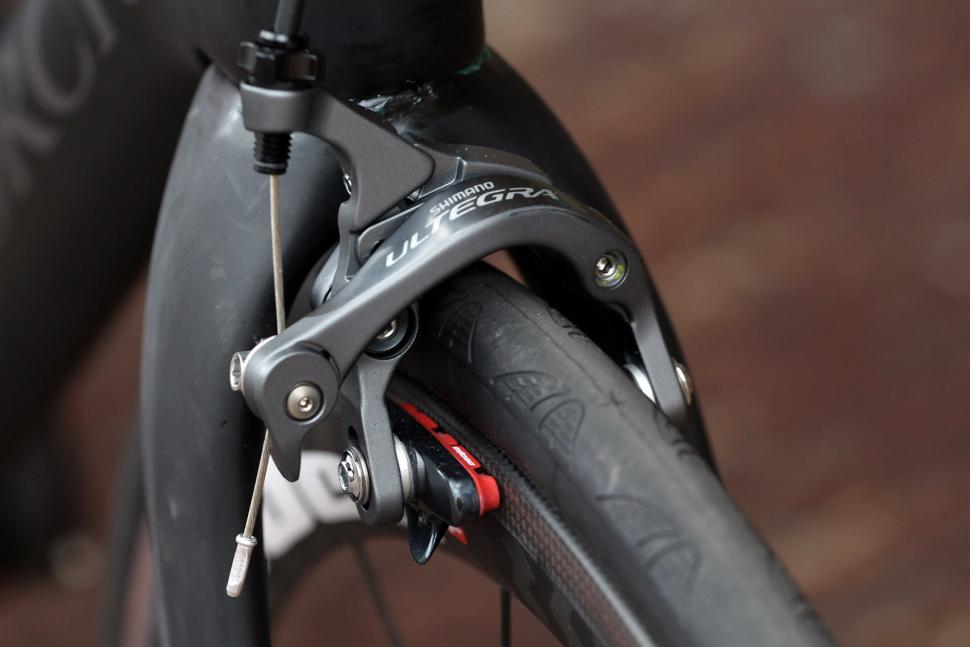
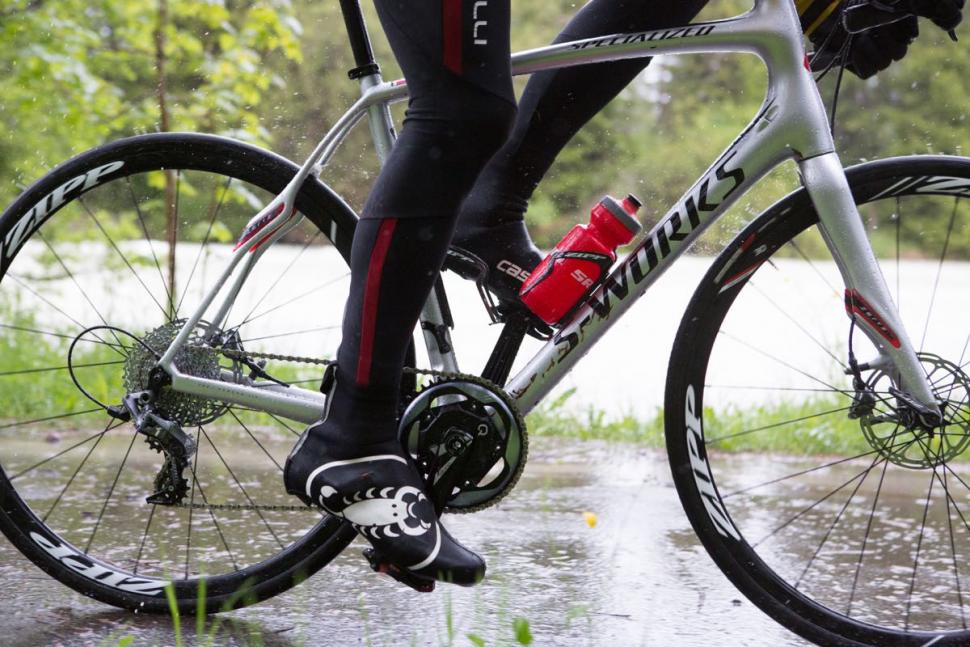
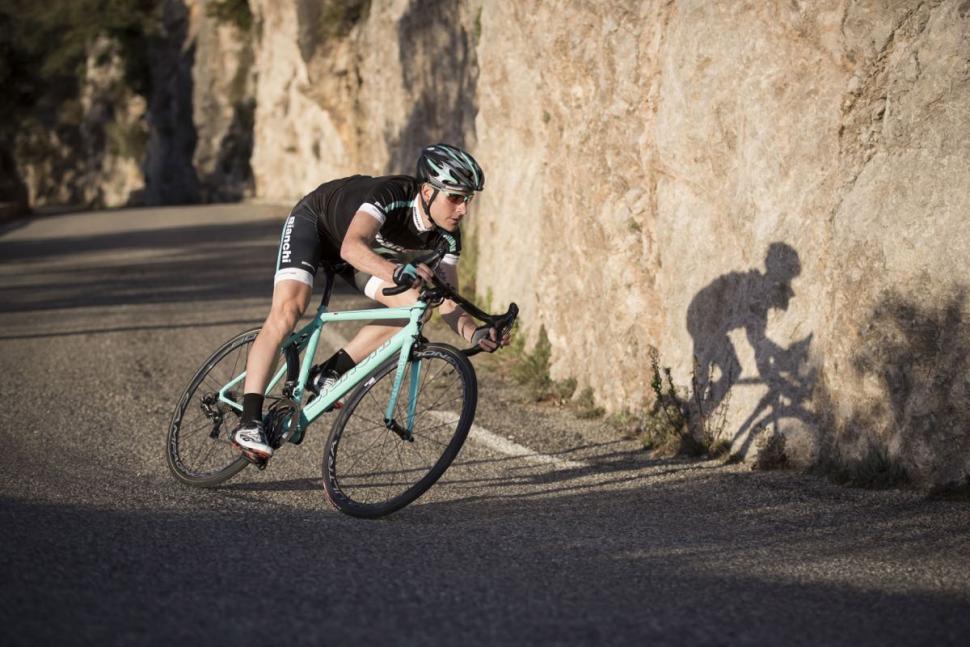
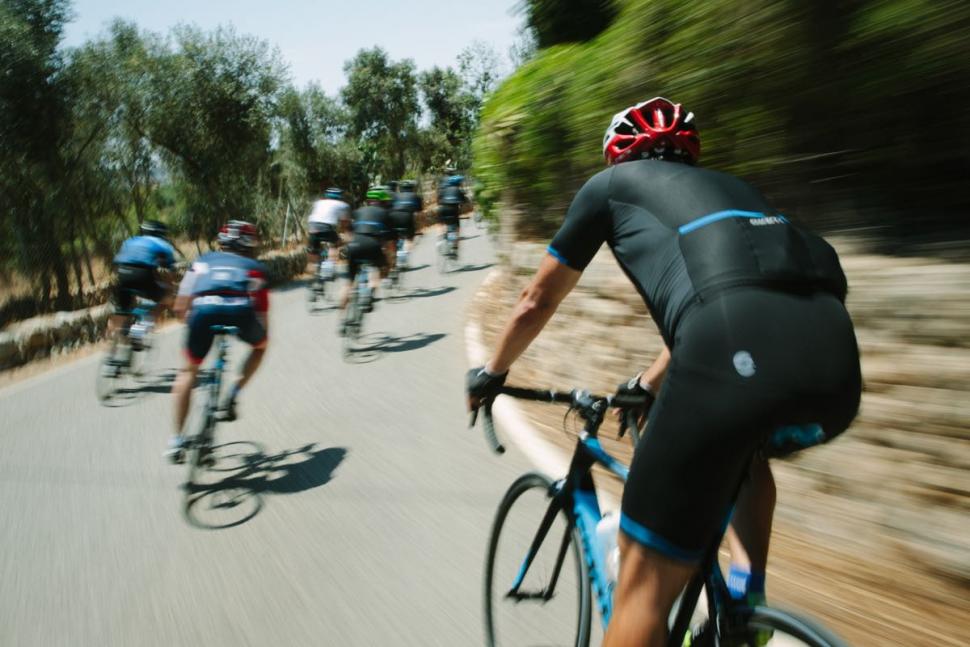
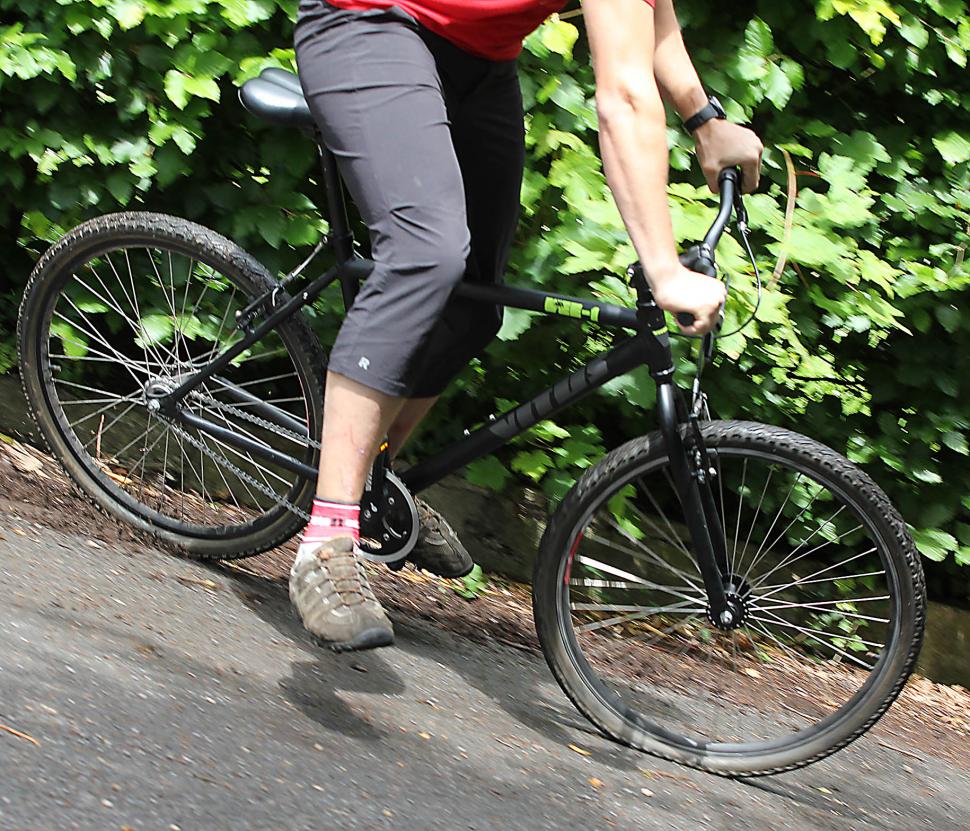
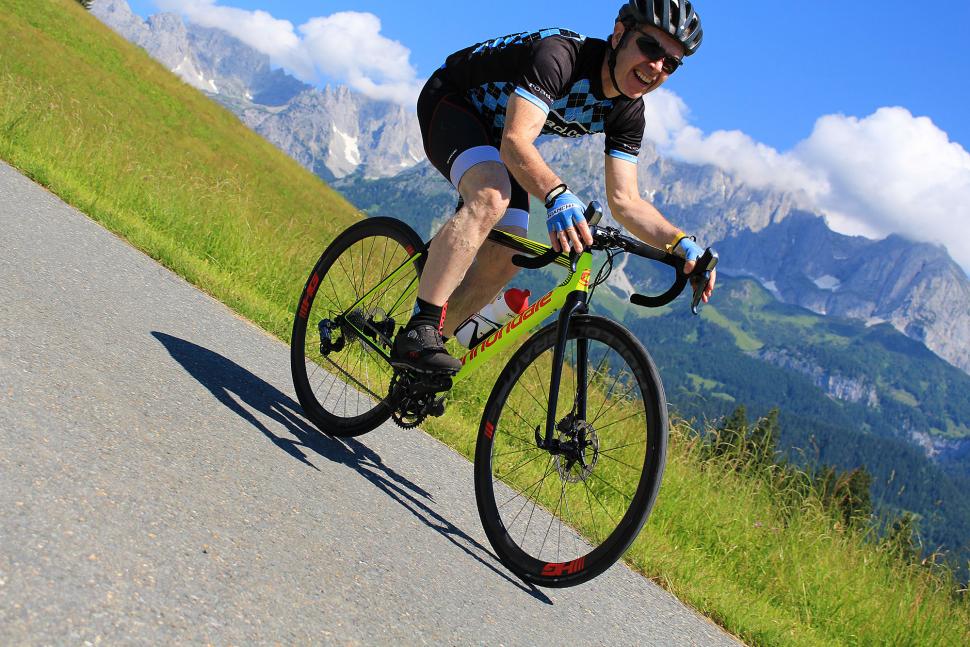
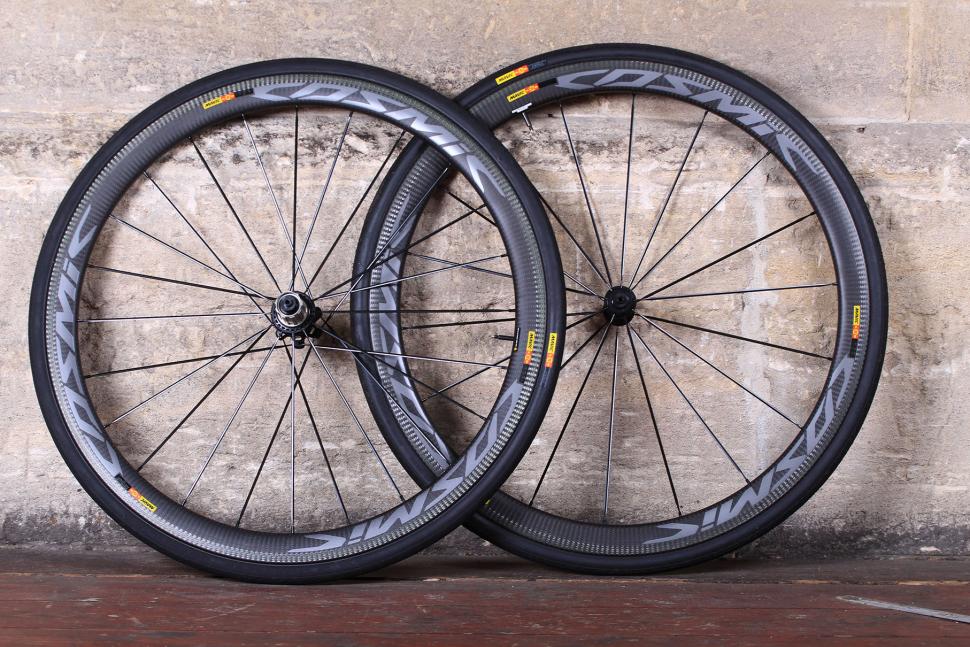
Add new comment
14 comments
"5. Don’t be scared of the front brake"
"6. Use the rear brake on slippery roads"
"8. Don’t rely heavily on the rear brake"
"10. Disc brakes versus rim brakes"
YMMV

Recumbent Tadpole Trike - 2 Front Drum Brakes and no Rear Brake (just a v-brake hand brake used when stationary)
...and fat/balloon tyres are an advantage too
This might be the wrong place to mention it, but MTB'ing really sorts out your bike handling skills! Including one standard MTB technique I've very rarely seen used by roadies - when braking hard, get your pedals horizontal, lift your bum off the saddle slightly & get your weight over the back of the saddle. This unweights the front wheel, making it easier to hold your line. Particularly important on rough surfaces (viz 99.8% of UK roads) &/or with poor traction.
I only do this when braking on downhills, generally on flat surfaces I am not braking so hard that the front wheel gets excessive weight.
In practice, the rules are: get discs and wider tyres. For me, both arrived on my new bike of last November and braking, even with a heavy trailer, has been a joy ever since, and I still haven't replaced any pads. TRP Spyre are wonderful!- other good disc brakes are available.
As an extension to #9 - keep your cranks level and drop your heels, pushing the bike into the ground. This will allow you to brake harder without losing traction.
That's the thing with the Internet- difficult to tell if you're being serious...
Conversly, when riding fast, get your toes down to lift your bike off the ground, reducing rolling resistance
Now that's what I call braking news.
(If the article wasn't 3 years old, that is.)
You didn't mention the most important fat tires!
Let me just to repeat that...
"FAT TIRES!"
That means more rubber on the road.
- If you need to brake hard, you're best doing it from the drops - you can get far more leverage on the levers than you can from the hoods (so much so that people new to drop bars can be caught out by this) and you are in a much better position to brace yourself against the handlebars and keep your weight low and back, which are the key factors in not going over the bars - see http://www.sheldonbrown.com/brandt/over-the-bars.html
- Don't drag your brakes on long descents. They dissipate heat better if you brake heavily and then release, or alternate between front and rear brakes so each has time to cool down.
If you are having to brake coming out or hair pins because you have gained speed around the corner, come in slower. Since the first part of the turn is slower, you can turn sharper and later so the time lost in is minimal and likely to be more than compensated by letting the bike run through the corner so you are exiting faster and also carrying that speed onto the straight section. Slow in-fast out.
Good point. Some people are too serious for 'stunts' but they do have a real world application sometimes. It's a bit like cars when it snows. I spent every snowy moment as youth doing drifts and handbrake turns in snow covered car parks. I'm now not one of those people who start to think about getting the bus when it snows as I've pretty much experienced everything that'll happen when you lose traction. Yes people would frown upon it but it's useful. Skids aren't just for kids but at least make sure your kids do them so they grow up with some handling skills.
Dunno if this mention in article but I want to share mine anyway
- Do not brake while on the bumps or you risking fly over the handlebar, actually, do not try to brake at all if you on rough surface
- Do not squeeze brake so hard in one shot, try repeating "tab" the brake like ABS action, its slow down faster that way